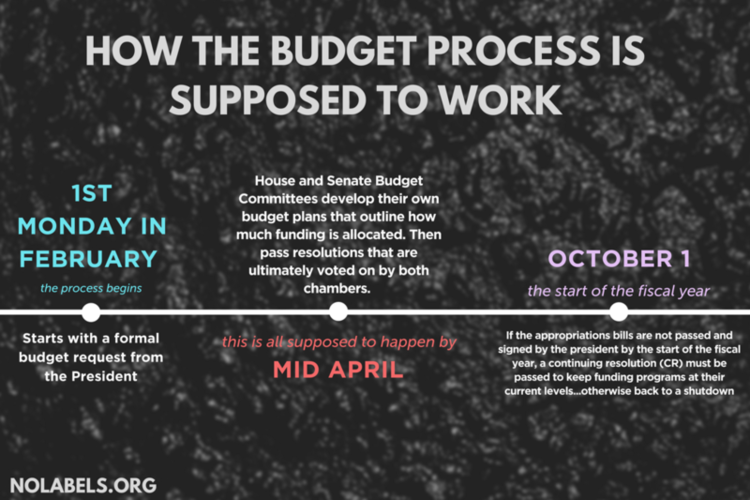How the Budget Process Is Supposed to Work

This past week, the federal government shut down for three days after Congress failed to pass a spending bill. While the shutdown has officially ended, these past 72 hours have cost our country millions, if not billions, of dollars.
But even though the federal government has reopened for business, it is hardly a cause for celebration. Congress is still over four months late in passing budget and appropriations legislation for this year, even as it is supposed to begin the budget and appropriations process for next year.
Here are the five facts you need to know about the appropriations process and how it is supposed to work:
1. Congress is responsible for funding the routine activities of federal agencies ranging from the Department of Defense to the Energy Department to NASA. These activities are considered “discretionary spending.”
All programs and activities that fall under the definition of “discretionary spending” must go through the appropriations process, which means lawmakers approve funding for them annually. “Mandatory” spending — like for Social Security and Medicare — is not subject to annual appropriations.
2. The federal budget and appropriations process is supposed to follow a timeline designed to keep federal programs and agencies funded and the government running. However, Congress is chronically late in passing budget and spending bills.
In addition to providing a budget resolution, Congress must also pass 12 appropriations bills. But because of delays in following the set timeline, “enactment after the start of the fiscal year has been a recurring issue,” according to the Congressional Research Service.
3. 1996 was the last time all appropriations bills were enacted by October 1, according to the Bipartisan Policy Center.
And it has recently become a recurring challenge to pass any appropriations bills on time. Since 2009, not one appropriations bill has been passed by the start of the fiscal year.

4. Based on the framework outlined in the 1974 Congressional Budget Act, the budget process when the president submits a budget request for the coming year.
According to the Center on Budget and Policy Priorities, this formal request is supposed to arrive by the first Monday in February, which this year is February 5. Following the president’s budget request, the House and Senate Budget Committees develop their own budget plans outlining how much funding is allocated. They then pass resolutions that are ultimately voted on by both chambers. This is all supposed to happen by April 15. Right now, we are months behind this set timeline.
5. Once the budget resolution has passed, Congress assesses the appropriations bills that are used to fund discretionary programs.
If the appropriations bills are not passed and signed by the president by October 1, the start of the fiscal year, a continuing resolution (CR) must be passed to keep funding programs at their current levels. If a CR is not passed, the government shuts down, as it did the past week.
No Labels is an organization of Democrats, Republicans, and independents working to bring American leaders together to solve problems.




